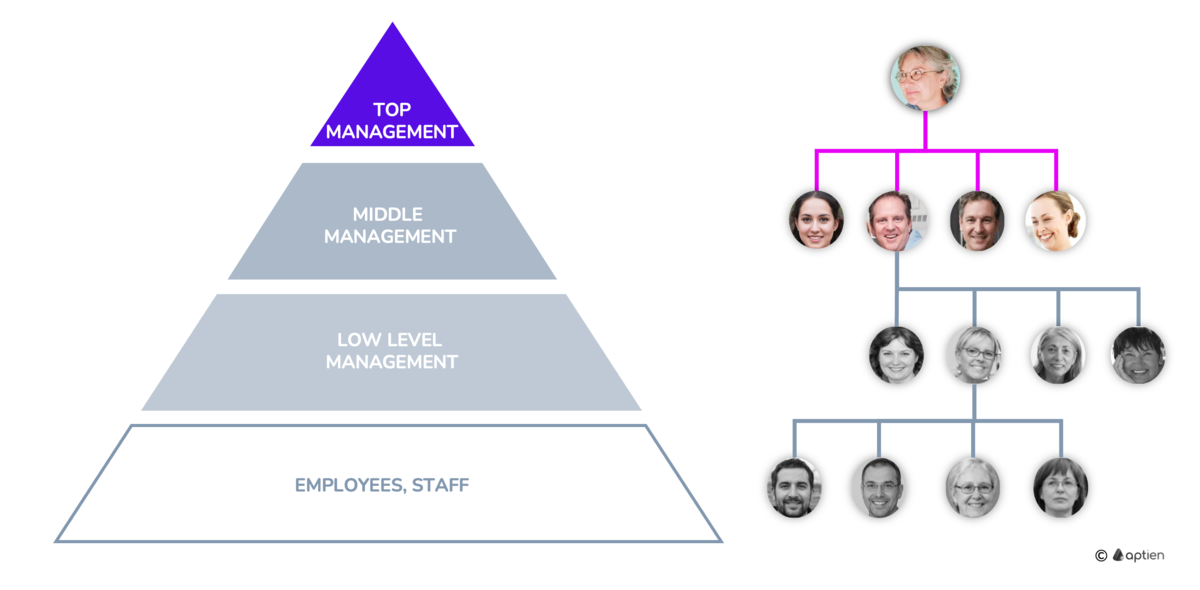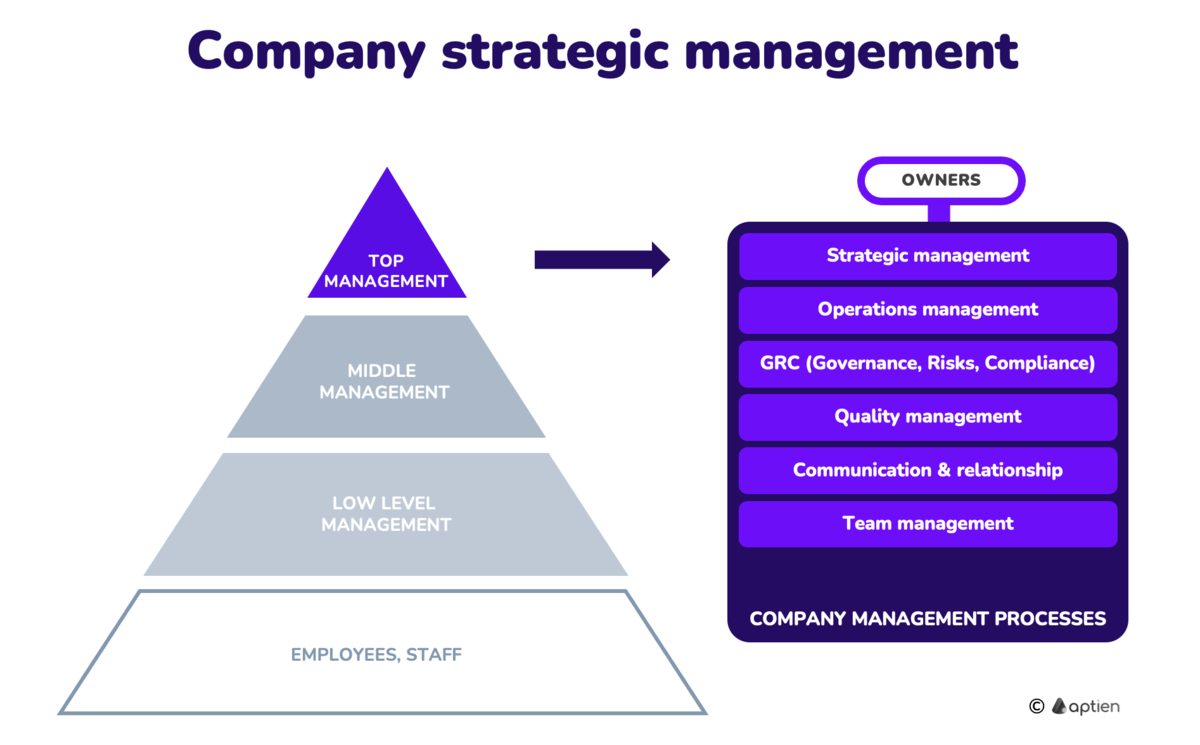Top Management: A Simple Explanation
Top management refers to the senior leadership of a company – the people who:
- set the overall strategy for the company,
- make key decisions (e.g., about investments, goals, and priorities), and
- are ultimately responsible for the company's success or failure
Who is Top Management in Small and Mid-sized Businesses?
Small Business (e.g., 10–50 employees)
- Top management often consists of the owner(s) or the President/CEO.
- This core group typically includes the owner, or functional leaders such as a Head of Operations or Sales Director.
Mid-sized Business (e.g., 50–250 employees)
Mid-sized businesses usually have a more structured leadership team, for example:
- CEO (Chief Executive Officer), often also the owner or President.
- CFO (Chief Financial Officer).
- COO (Chief Operations Officer).
- Potentially a Head of Human Resources or Sales Director.
This leadership team typically remains a compact group (around 2–5 individuals) responsible for strategic decision-making across the entire company. Mid-sized businesses are also characterized by having established middle management layers. In contrast, large corporations often feature a significantly broader and more hierarchical executive structure with numerous senior leaders.
Definition of Top Manager
A top manager (C-level executive) is responsible for overseeing and leading a major area within the entire company. They set the strategy for their area, manage operations through other managers, and lead their team. Top managers guide middle managers in larger businesses and directly lead first-line managers in smaller companies. Their main role is to set the strategic direction for their area in alignment with the overall company goals, while day-to-day operations are handled by lower-level managers.
What Are Key Responsibilities of a Top Manager?
- Translate company strategy into daily activities and processes
- Oversee and manage their department or business area
- Lead and support managers within their area
- Organize and supervise their team’s daily tasks
- Review and ensure quality of work from their team
- Resolve work-related issues or challenges
- Address operational problems as they come up
Examples of top managers include:
- CEO (Chief Executive Officer) – leads the entire company (also called Managing Director in some organizations)
- CFO (Chief Financial Officer) – oversees finances
- COO (Chief Operating Officer) – manages daily operations
- CIO (Chief Information Officer) – responsible for IT
- CHRO (Chief Human Resources Officer) – leads human resources
- CSO (Chief Sales Officer) – heads sales
Responsibilities and Duties of a Top Manager
Management and Coordination:
- Oversee operations and activities within the assigned department.
- Implement and manage the company’s strategy for the assigned area.
- Lead department managers and their teams.
- Coordinate activities across the organization to ensure alignment with overall business goals.
Daily Operations:
- Guide team members in their daily work and organize tasks.
- Review work output to ensure quality and consistency.
Approvals:
- Approve requests and decisions related to the managed area.
- Approve budgets and resource requests from team members.
Onboarding and Adaptation:
- Support new managers in adapting to their roles.
- Conduct interviews for hiring new managers.
Performance Management and Development:
- Evaluate the performance of managers and other employees.
- Develop growth and training plans for managers.
- Identify skill gaps and organize training opportunities.
Problem-Solving:
- Address issues and conflicts beyond the scope of lower-level managers.
- Maintain positive working relationships among managers and staff.
Human Resources Strategy:
- Collaborate with other managers to identify strategic staffing needs.
- Partner with HR to plan for future workforce requirements.
- Plan succession for key leadership positions.
Other Responsibilities:
- Ensure the department grows in line with company strategy.
- Provide mentorship and coaching to team members.
- Manage the full budget for the assigned area.
- Hold team meetings and communicate updates effectively.
What You Can Do as a Senior Manager in Aptien
As a senior manager, you oversee direct reports within your team. You can:
- Approve Requests: Manage various requests from your team members.
- Manage team
- Task Overview: View a summary of your team’s tasks.
- Employee Records: Access employee files, personal details, onboarding status, training, and development plans.
- Issued Equipment: Monitor assigned work equipment, tools, and completed training.
- Organizational Overview: Get a full overview of everyone in your department.

